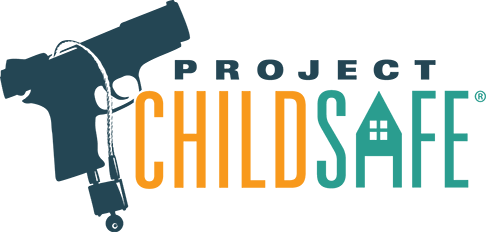Search
Cart
There are no items in your cart.
Login
Securing Freedom: The Second Amendment in Our Changing World

The Second Amendment to the United States Constitution, a part of the Bill of Rights, has been a subject of ongoing debate and interpretation since its ratification in 1791. The amendment reads: "A well regulated Militia, being necessary to the security of a free State, the right of the people to keep and bear Arms, shall not be infringed." This statement has been dissected and analyzed extensively, with particular focus on the term "well regulated Militia" and how it translates to the individual's right to own and carry weapons in the 21st century.
.
Historical Context
The framers of the Constitution lived in a time when citizen militias were a critical component of the country's defense. In the absence of a large standing army, these militias, composed of ordinary citizens bearing their own arms, were seen as a safeguard against potential threats, both foreign and domestic. The term "well regulated" in the 18th-century parlance meant something closer to "well functioning" or "well equipped". Hence, a "well regulated militia" referred to a citizens' militia that was effectively equipped and prepared to function as a defensive force.
.
Modern Interpretation
Fast forward to the 21st century, the landscape of national defense has dramatically evolved. We now have a large, standing military and numerous law enforcement agencies. Even today, the U.S. has both organized and unorganized militias. The organized militia consists of the National Guard and the Naval Militia, which are well-regulated, well-trained, and funded by the government.
The unorganized militia, on the other hand, is composed of every able-bodied man of at least 17 and under 45 years of age, not a member of the National Guard or Naval Militia, as per the Militia Act of 1903. This age range likely reflects practical considerations based on physical capabilities and societal norms. The lower limit of 17 years aligns with the age at which individuals are generally considered capable of military service, while the upper limit of 45 years is a broad guideline based on assumptions about physical fitness and the decreasing ability to engage in strenuous physical activity as one ages.
The definition and relevance of "militia" continue to be subjects of ongoing legal and political debates, particularly in discussions related to gun control and the Second Amendment. The crux of the modern interpretation lies in two primary schools of thought: the "collective rights theory" and the "individual rights theory".
Proponents of the collective rights theory argue that the Second Amendment only protects the right to bear arms as part of a well-regulated militia. Conversely, supporters of the individual rights theory interpret "the right of the people to keep and bear Arms" as a personal right, separate from militia service. The Supreme Court of the United States endorsed this latter interpretation in the landmark case District of Columbia v. Heller in 2008.
.
The Evolution of Firearms and the Core Principles of the Second Amendment
One of the prominent arguments against the modern application of the Second Amendment asserts that its authors could not have possibly anticipated the rapid evolution of firearms technology. From single-shot muskets of the 18th century to today's semi-automatic and high-capacity weapons, the argument posits that these developments invalidate or at least call for a reevaluation of the Second Amendment rights.
However, the core principles of the Constitution and the Bill of Rights were designed to be timeless, addressing fundamental human rights and the balance of power. Just as the First Amendment's protection of free speech extends to modern forms of communication like the internet and social media, the Second Amendment's protection of the right to bear arms applies to modern firearms.
The evolution of firearms, from muskets to semi-automatic weapons, does not diminish the right to self-defense but arguably reinforces it. Modern firearms offer enhanced reliability, accuracy, and ease of use, all of which are critical in a defensive situation.
Furthermore, the term "assault weapon" has entered the modern discourse, often used to describe semi-automatic firearms with certain features. This term, however, has been criticized as a politicized and nonsensical expression, as "assault" is an act committed by a person, not a tool. It's crucial to understand that a tool's potential for misuse does not negate its legitimate uses, such as self-defense or sport.
.
The Second Amendment as a Safeguard against Tyranny
A unique feature of the United States' Constitution and American democracy as such, the Second Amendment, also serves as a check and balance on the power of the government. This principle has its roots in the experiences of the Founding Fathers, who recognized the potential for governments to overreach and infringe upon the rights of their citizens. By ensuring a right to bear arms, they provided a potential safeguard against tyranny.
The Second Amendment is a stark reminder to the government that it derives its power from the people and is duty-bound to serve them. This provision reflects the broader ethos of the Constitution – that power is vested in the people, and it is they who have the ultimate authority. This understanding is crucial as it influences the interpretation and implementation of the right to bear arms in contemporary society.
.
Conclusion
The phrase "well regulated militia" in the context of the Second Amendment, the evolution of firearms, and the role of the Amendment as a safeguard against tyranny, have significantly shaped the modern interpretation of the right to bear arms. The right extends as an individual right, with its scope and limitations continuing to be refined in our ongoing quest to harmonize individual rights with public safety.
It is important to acknowledge that individual rights and public safety are not inherently contradictory. In an ideal scenario, the exercise of individual rights, including the right to bear arms, would align perfectly with the broader goals of public safety. However, crafting policies that reflect this ideal balance can be challenging, especially given the complexities of modern society.
Political biases, differing interpretations of the Constitution, and societal changes can all impact this balance. Yet, it is crucial to strive for a world in which the exercise of individual rights enhances, rather than compromises, public safety. To achieve this, we must foster open, honest dialogue, remove political malice, and work towards thoughtful, evidence-based policies that uphold both these essential aspects of our society.
The Second Amendment, with its historical roots and modern implications, exemplifies this ongoing struggle to find a balance. As our society evolves, so too will our understanding and application of this fundamental right, always striving to uphold the principles of liberty and safety that lie at the heart of the American Constitution.
.
~~~~~~~~~~~~~
Additional Reading: expanded version of the article, "The Second Amendment: Safeguarding Liberty in a Changing World"
NEWSLETTER










Leave a Comment